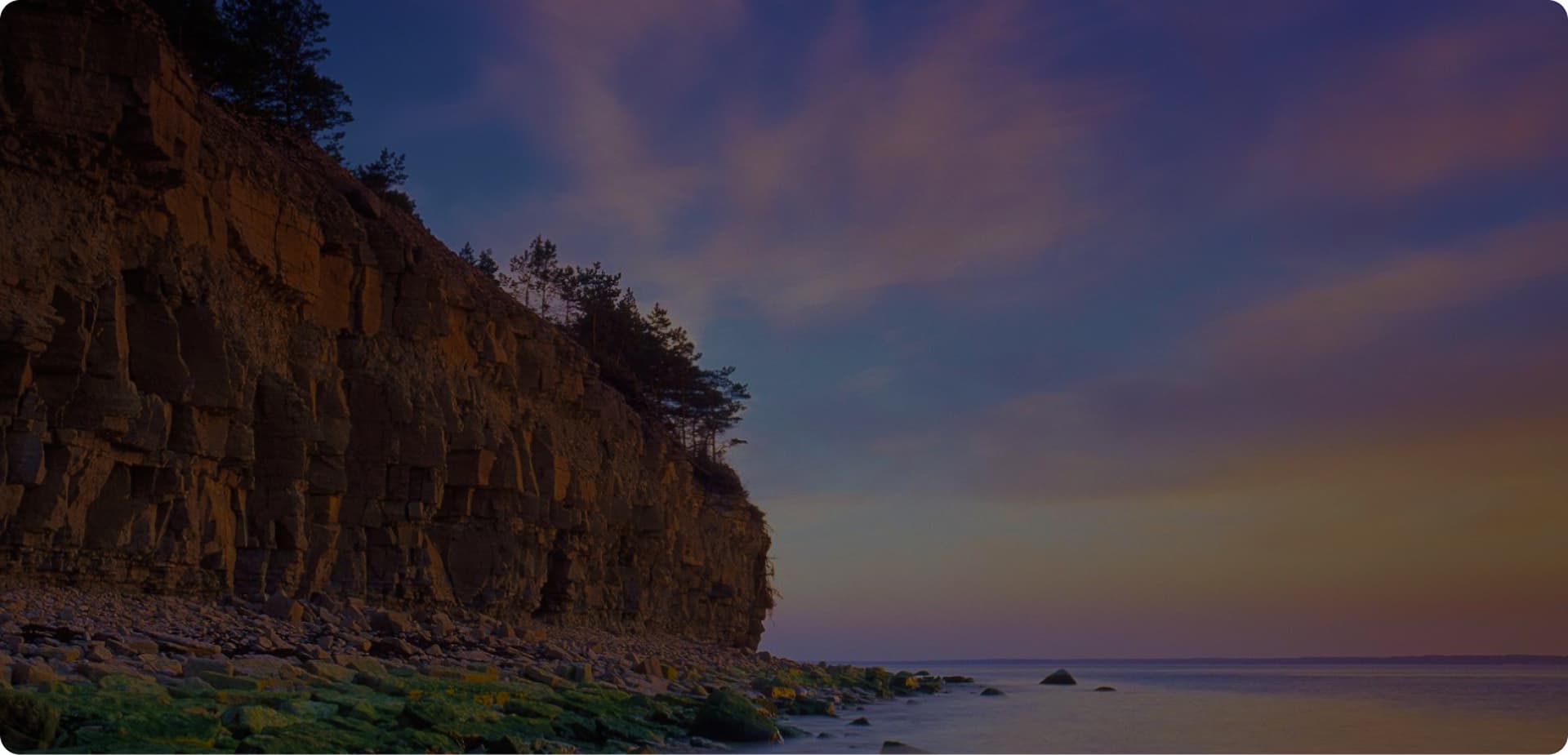Panga cliff has been under nature protection as an individual object since 1959. In 1999, the Panga Landscape Protection Area was established based on the protected individual object. The main objective of the protected area, according to the protection regulations, is to protect the highest part of the West Estonian limestone coast, Panga cliff, and the plant communities there.
Panga cliff is the highest outcrop in western Estonia and the islands, with high international geological value. The cliff was formed from the deposits of a tropical sea during the Silurian period, about 420-430 million years ago, and is known as the Jaani Formation (up to 80 m thick).
The Silurian escarpment is a local cliff that starts on the island of Gotland in Sweden, runs through the Baltic Sea, and rises to the surface on the western coast of Saaremaa. The geological structure of Panga cliff is of interest to many visitors and scientists. Protected species include II (white and red milkvetch, yellow-billed cuckoo, woodlark) and III (dark red helleborine, common spotted orchid, greater butterfly-orchid, lesser butterfly-orchid, creeping lady's-tresses) protected species.
A rare phenomenon is the colony of house martins (Delichon urbica) on the wall of Panga cliff. The Küdema Bay area adjacent to the Panga Landscape Protection Area is part of the Küdema Bay reserve. The area is also of significant importance as a bird area (TLA, IBA code EE011) and is part of the Natura 2000 network as a bird and nature area in Küdema Bay (EE0040432). South of the Panga Landscape Protection Area is the Laidunina Island Nature Reserve, which was established to protect the local breeding bird population.







